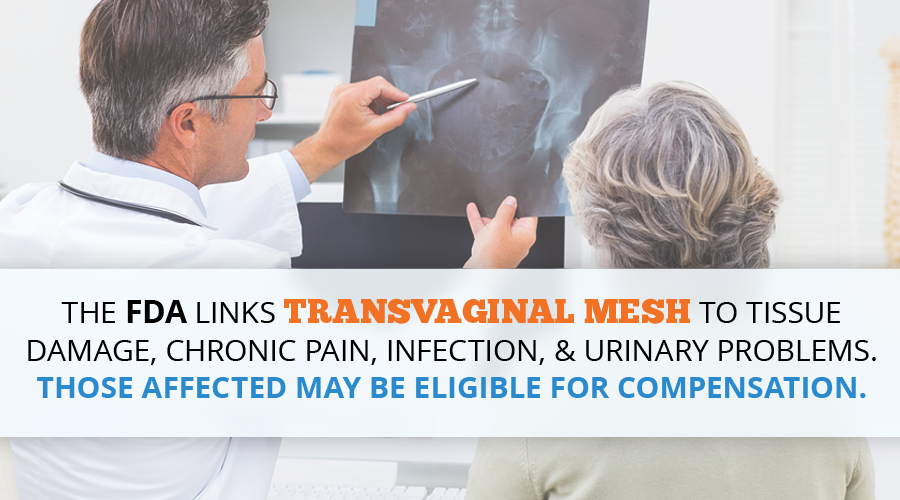Transvaginal Mesh Injury Warnings
Transvaginal mesh was originally developed based on surgical mesh devices used for hernia repair in the 1950s, and the first vaginal mesh device for POP or SUI repair was approved by the U.S. Food and Drug Administration (FDA) in 1996, through the agency’s 510(k) fast-track approval program. Unfortunately, many of the transvaginal mesh products on the market today garnered FDA approval based on the ProtoGen Sling, which was recalled in 1999, after it was discovered that the implant had a “higher than expected rate of vaginal erosion,” and did “not appear to function as intended.”
Despite growing concerns about the alleged risk of vaginal mesh side effects, the FDA issued a public health advisory in 2008, indicating that complications from transvaginal mesh used for the surgical repair of POP, while serious, were rare. The warning came after the FDA had received more than 1,000 reports from nine vaginal mesh manufacturers of side effects associated with mesh devices used to repair POP or SUI. The agency warned that “treatment of the various types of complications [associated with TVM] included additional surgical procedures (some of them to remove the mesh), IV therapy, blood transfusions, and drainage of hematomas or abscesses.”
In 2011, after receiving close to 4,000 reports of complications related to transvaginal mesh in the previous six years, the FDA issued an updated safety communication, warning that side effects from vaginal mesh for POP or SUI repair were not rare. According to the FDA warning, “the most frequent complications reported to the FDA for surgical mesh devices for POP repair include mesh erosion through the vagina, pain, infection, bleeding, pain during sexual intercourse, organ perforation and urinary problems.” At that time, the FDA also stated that “it is not clear that transvaginal POP repair with mesh is more effective” than non-mesh repair, and “may expose patients to greater risk.”


